Back when we took a look at the WD Blue SN550 1TB SSD, a reader commented they would like to see the ADATA XPG SX8200 Pro added to our review charts. I agreed, and apparently so did ADATA because they have sent us over that exact drive to test. This is a mainstream drive from ADATA under their XPG gaming brand, and it features PCIe 3.0 x4 connectivity, a Silicon Motion SM2262G controller, onboard DRAM cache, and TLC NAND.
ADATA SX8200 Pro 1TB Overview
The ADATA SX8200 Pro 1TB comes in a double-sided M.2 2280 (80mm) form factor.
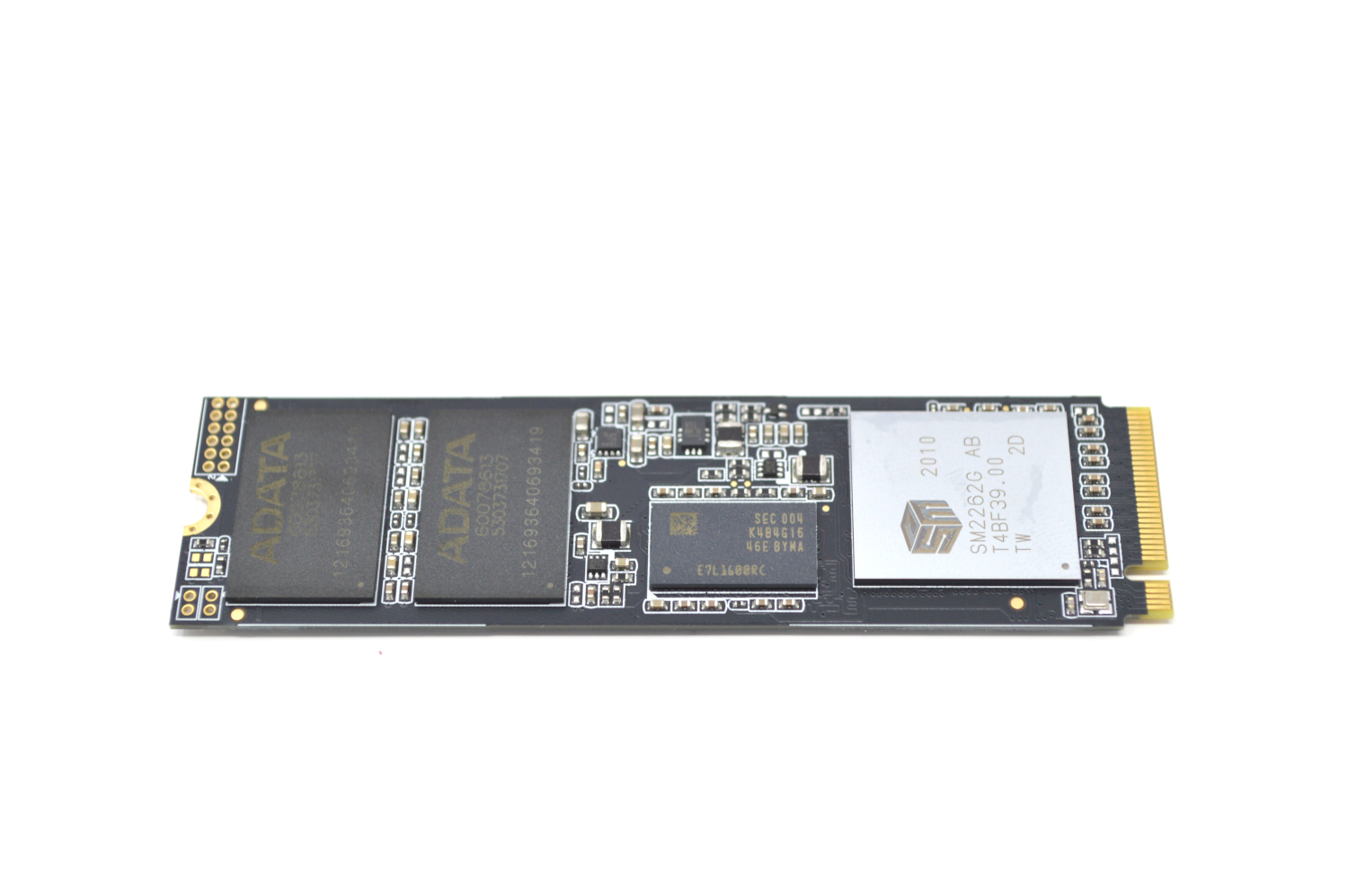
The front of the SX8200 Pro is home to the Silicon Motion SM2262G controller, the DRAM cache, and half the NAND. The SX8200 Pro 1TB is not a new SKU, but interestingly enough earlier reviews for this drive showcased the drive with a different controller, the SM2262EN. I reached out to ADATA for comment, and they said “The performance of drives with 2262G is the same with the drives with 2262EN, and the drives with either or controllers can be seen in the market at the same time as well.” We do not have comparable benchmark performance numbers from the 2262EN version of the drive to validate their statement, so we will simply evaluate this drive on its own. With that said, buyers should be aware there are two versions of the drive in the wild and almost all of the other published reviews cover the 2262EN variant.
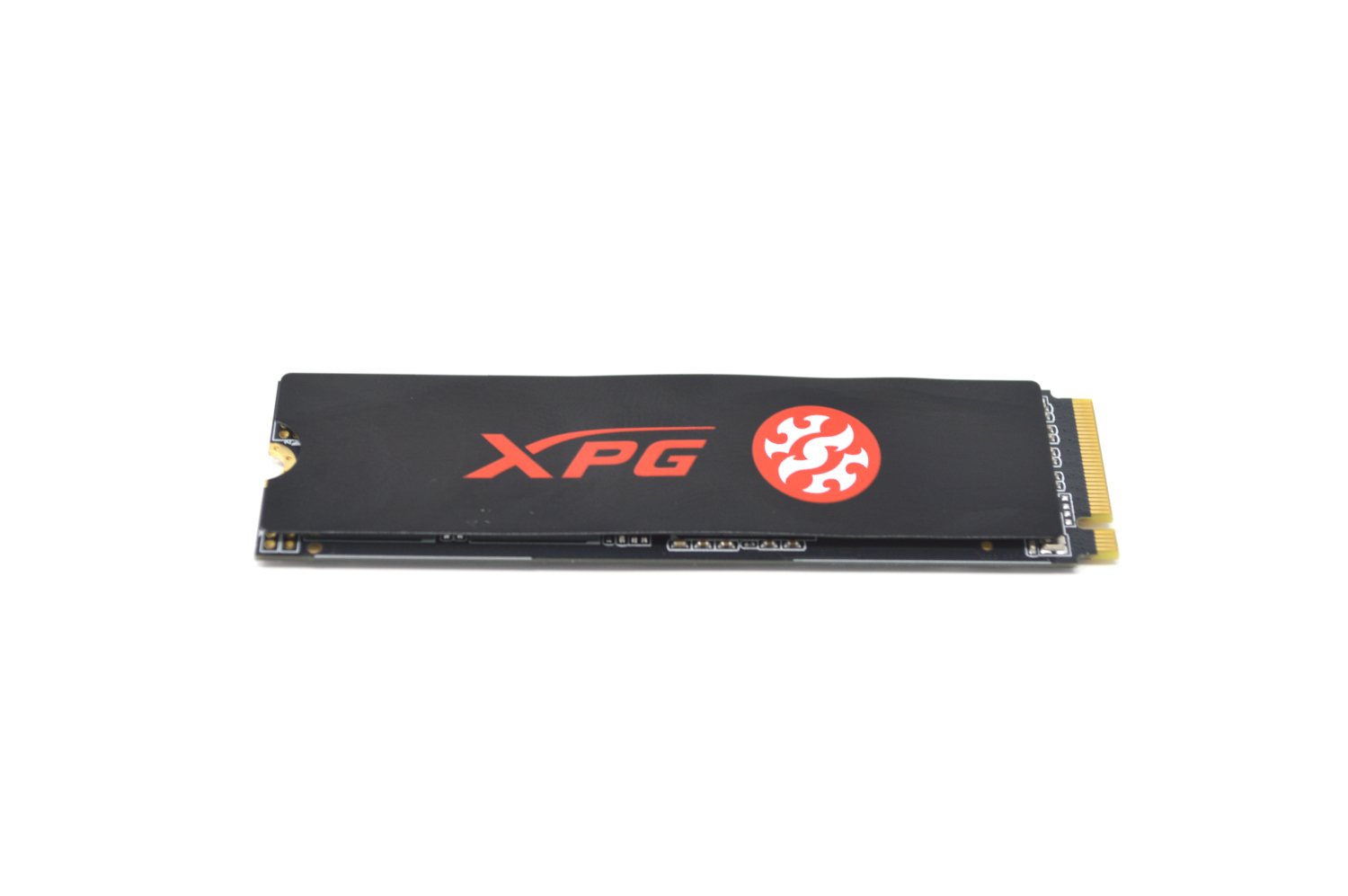
Also in the box is a thin user-applied heatsink. We will perform thermal tests to see if this heatsink is necessary, and then to see how effective it is.
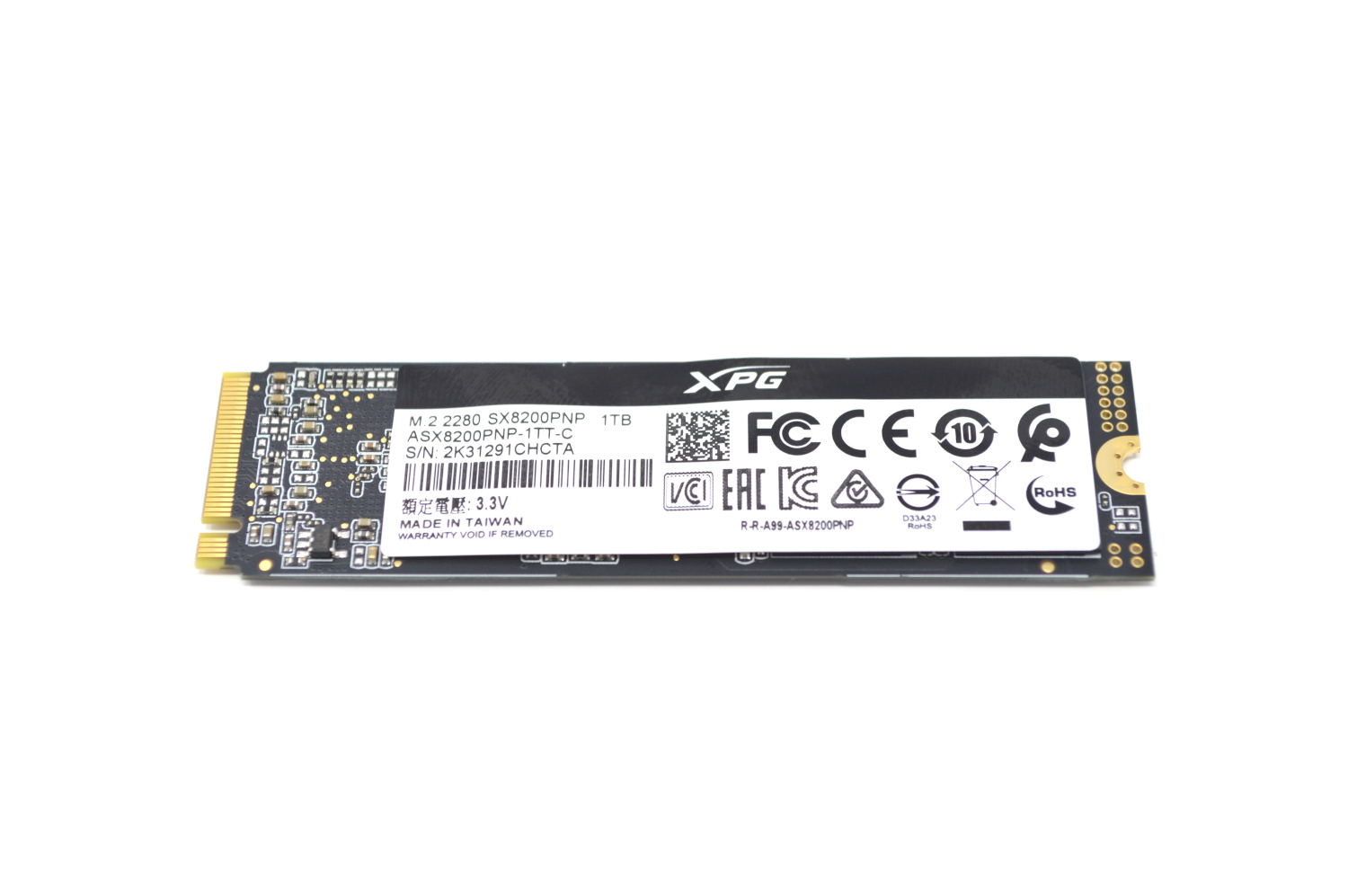
The back of the drive has product information, and both another DRAM chip and the other half of the NAND. In total there is 1024GB of NAND onboard. Of this, 1000GB is available to end-users. This small 24GB reserved area is very common with consumer-class SSD models.
ADATA SX8200 Pro Specs
The ADATA SX8200 Pro line of TLC based SSDs ranges from 256GB up to 2TB in size.
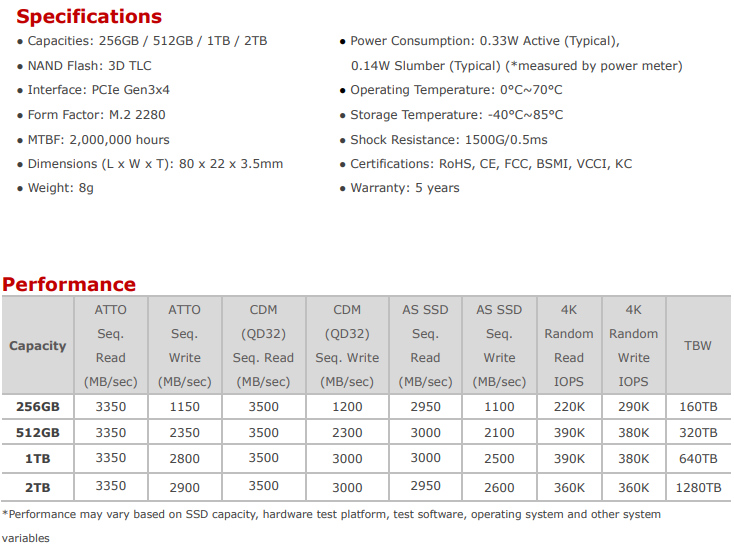
Our review unit is a middle child in the SX8200 Pro line, offering good rated performance and endurance. It is interesting that ADATA has provided example benchmark results from some of the tests we run, though they do not provide the exact details of how their benchmarks are configured and very likely they do not line up with our testing methodology.
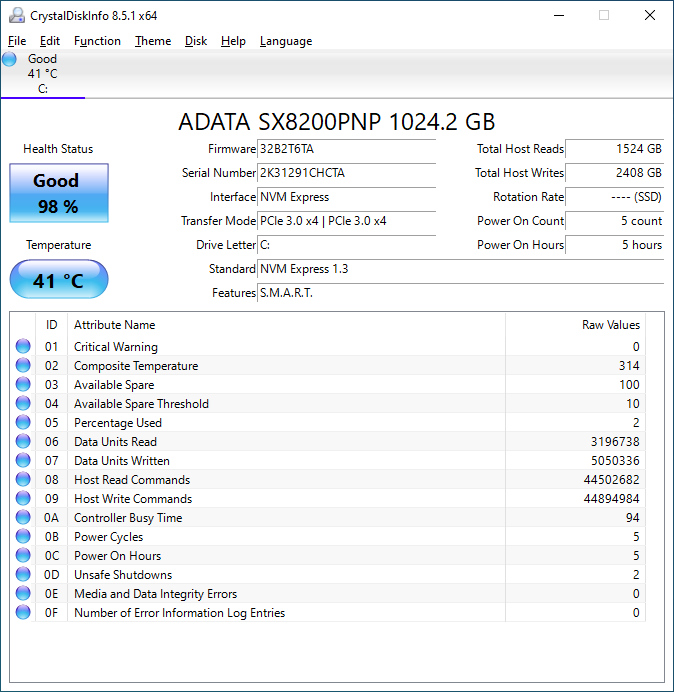
CrystalDiskInfo can give us some basic information about the SSD, and confirms we are operating at PCIe 3.0 x4 speeds using NVMe 1.3.
Test System Configuration
We are using the following configuration for this test:
- Motherboard: ASUS PRIME X570-P
- CPU: AMD Ryzen 5 3600 (6C/12T)
- RAM: 2x 16GB DDR4-3200 UDIMMs
Our testing uses the ADATA SX8200 Pro 1TB as the boot drive for the system, installed in the M.2_1 slot on the motherboard. The drive is filled to 85% capacity with data and then some is deleted, leaving around 60% used space on the volume.
Next, we are going to get into our performance testing.

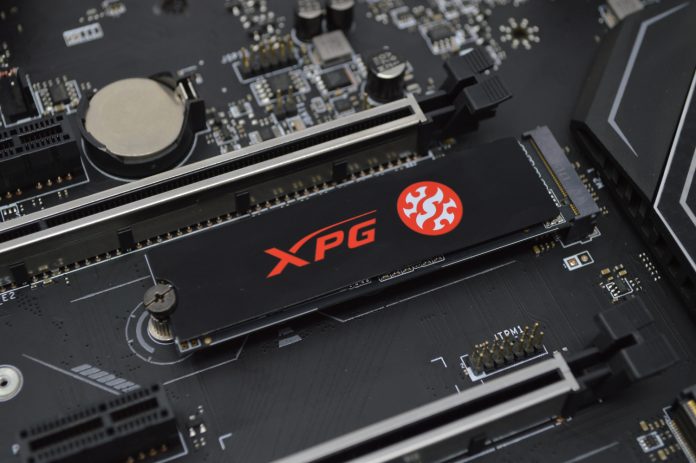



The XPG 8200 Pro has decent specs, and I bought a 512gb drive. It worked for about 2 days and then was not recognized by my computer BIOS. I haven’t had a SSD fail in the last decade. I returned it, and I plan on avoiding Adata / XPG.
This device is advertised as nvme 1.4 but is missing the required guid’s to work with vmware without resorting to down grading the nvme driver to Vsphere 6.5
Please ask Adata when they will release firmware to add in the missing NGUID and EUI-64 namespace Identifiers:
Crucial managed to do this, why can’t adata?
WelshWizard,
I only see advertising for NVMe 1.3 on the xpg.com site for this drive (located at https://www.xpg.com/en/feature/583/). It may be possible for a firmware update to add the features you want, but it is not advertised as 1.4.
I’ve got the 512GB for gaming. Absolute wee cracker of an M2. Wish I got the 1TB for longevity. Fancying their new PCI-E x4 M2 though!
On an MSI carbon pro gaming X570. Excellent speeds. First to drop, always
I can’t see why anyone would look at this, or almost anything else over the Hynix gold P31.
Fast reads, writes, low power, no need for a heat sink, TLC, 5 year warranty, 135 bucks.
Hello
Can you please consider using AJA system test ( eventually against instead BlackMagic suite)?
It’s a much more suitable test for showing the sustainability of the storage during a real lifr recording test
Thank you in advance
@Will Taillac,
Oh oops, yeah I made a mistype I did mean 1.3, not 1.4.
This doesn’t change much as NVME 1.3 standard should have NGUID and EUI-64 namespace Identifiers, which are missing.
How can you call I standard compliment with missing features?
The only thing I’d like to see in these tests is more of a emphasis on random performance rather than sequential.
James,
Sequential performance is often what is quoted by consumer SSD manufacturers in their specifications, so I test for that to make sure they line up with their own advertising. Plus, everyone likes big numbers; CDM and ATTO serve that purpose. For someone interested in the random performance, ASSSD and Anvil offer a much better benchmark, since their read and write scores include the random performance at varying queue depths. That is also the reason I include the pictures of the raw benchmark output, rather than just the comparison graph – so our readers can look at the stat that matters to them.
@Will can you ask ADATA about their plans to add in the missing features which are part of the 1.3 spec namley NGUID and EUI-64 namespace Identifiers
As without these it cant be used in vmware without downgrading nvme drivers.
I’m planning on 2x1TB versions of this ADATA model for entry in to the HP L32648-001 running under FreeNAS as a cache. Cannot wait to finish the build with 4x10Gbe SPF+ from two Chelsio T420s.
Thanks for writing this article.
How do we check which controller we have? I have 2x 2 TB but I bought them several months apart. I don’t want controller discrepancies to cause problems if/when I stripe them…
Ted,
I found out about the controller by physically looking at it. The model was silkscreened right onto the controller.
AIDA64 shows the controller of the SSD without physically looking at it, specially when you already put the heatsink on it. Just go to Storage>ATA then select your SSD and the info can be found usually at the bottom of the details.
lopgok comment is stupid, because the infallible product does not exist, that is why warranty exists. I work for a computer manufacturer and I hate this kind of customer no brain comment and hurt brand without consequences. This kind of person is really undesirable even hire for job.
Writing this on april 2023
I bought 512GB one 6 months ago, it died the get replaced , hopefully the second one will be better